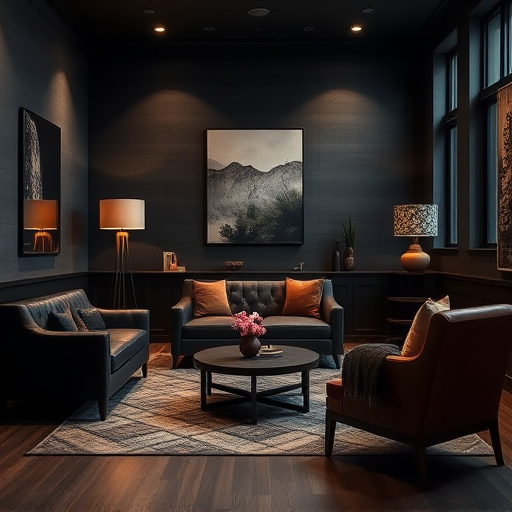Noise reduction chambers, designed with advanced materials and meticulous attention to detail, offer unparalleled acoustic isolation for various industries. Their primary goal is to achieve a quiet performance by minimizing external noise. These chambers use specialized air intakes, sound-absorbing panels, dampening systems, and careful design to create near-anechoic environments. By drastically reducing external noises, they ensure sensitive equipment operates at peak efficiency without interference, catering to applications from military testing to recording studios. Key factors in their design include optimizing sound absorption, strategic air intake placement, and implementing quiet ventilation systems for stealthy and efficient quiet performance.
Noise reduction chambers offer a sanctuary of silence, designed to cancel out external noise for optimal focus and comfort. This article explores the intricate world of chamber design, delving into three key areas: understanding the fundamentals, silent air intake systems, and stealth technology for reduced visual and acoustic signatures. We uncover the secrets behind achieving quiet performance, from material selection to advanced insulation, providing insights vital for researchers, military professionals, and anyone seeking unparalleled tranquility.
- Understanding Noise Reduction Chambers
- – Definition and purpose of noise reduction chambers
- – Key considerations in design for effective noise cancellation
Understanding Noise Reduction Chambers

Noise reduction chambers are specialized rooms designed to achieve exceptional levels of acoustic isolation, ensuring a serene and quiet environment. These chambers play a pivotal role in various industries, from research and development to manufacturing and defense, by enabling precise control over sound levels. The primary objective is to minimize or eliminate unwanted noise, creating a space that facilitates tasks requiring utmost focus and clarity, such as delicate listening tests or sound-sensitive measurements.
The design of these chambers often incorporates innovative strategies, like using advanced materials for walls, ceilings, and floors, to absorb and block external sounds. Special attention is given to air intakes, ensuring minimal noise from ventilation systems, contributing to the overall stealth and quiet performance. This meticulous engineering ensures that the internal environment remains free from distractions, making these chambers indispensable tools for professionals seeking an undisturbed acoustic space.
– Definition and purpose of noise reduction chambers

Noise reduction chambers are specialized rooms designed to significantly minimize and control noise levels, creating an environment conducive to quiet performance. These chambers are crucial for various applications, from testing the stealth of military equipment to enhancing concentration in recording studios. By containing and absorbing sound waves, these chambers ensure that internal activities remain virtually silent, making them essential tools for industries seeking optimal quiet performance.
The design of noise reduction chambers incorporates advanced acoustic treatments and materials that reflect and dissipate sound energy. This includes strategic placement of sound-absorbing panels, special noise-reducing air intakes, and sometimes even dampening systems. The goal is to create a near-anechoic environment where external noises are drastically reduced, allowing for precise measurements and evaluations in various fields. Such chambers play a pivotal role in ensuring that sensitive equipment operates at its best, without the interference of unwanted noise.
– Key considerations in design for effective noise cancellation

Designing a noise reduction chamber requires careful consideration of several factors for effective noise cancellation. One key aspect is optimizing quiet performance. This involves using advanced sound-absorbing materials and techniques to minimize reflection and reverberation, ensuring the chamber efficiently reduces ambient noise. The placement and design of air intakes play a crucial role in maintaining a steady flow of air while sealing out external sounds, contributing to overall silence.
Stealth is another vital consideration, especially for applications demanding discreet operation. Chamber designers must implement quiet ventilation systems and carefully select materials that dampen noise generated during air circulation, ensuring the chamber operates almost silently. By integrating these strategies, chambers can deliver exceptional quiet performance without compromising functionality or aesthetics.
Noise reduction chambers offer a peaceful sanctuary from external disturbances, with meticulous design being key to their effectiveness. By incorporating advanced materials and thoughtful layout, these chambers provide optimal quiet performance, ensuring a serene environment for various applications. When seeking stealth and minimizing noise impact, prioritizing the right air intake strategies is essential in chamber design. Through understanding and applying these principles, designers can create spaces that offer unparalleled tranquility, catering to both research needs and personal quietude.














